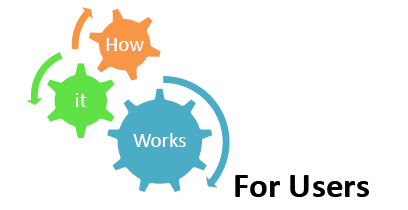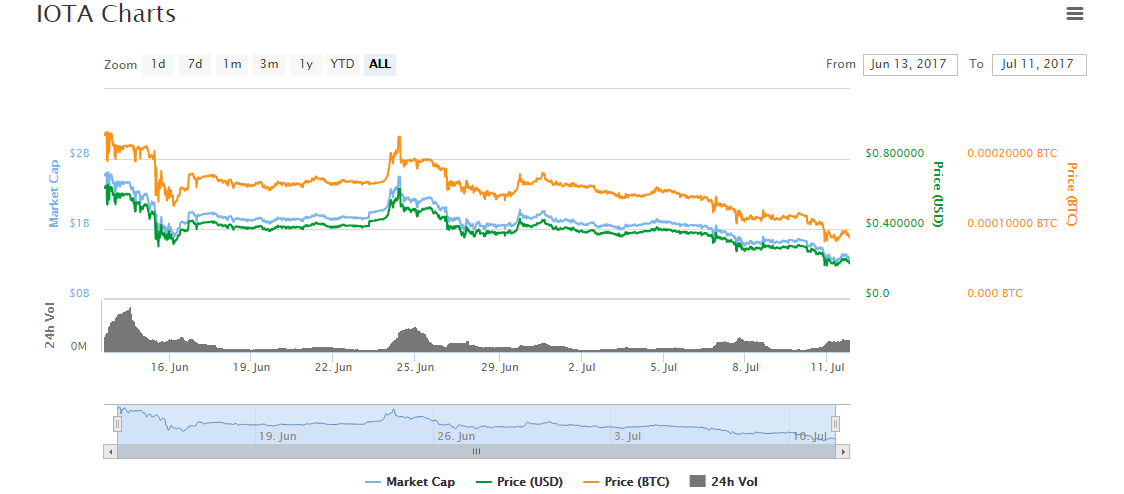IOTA COIN AND ITS TANGLE: NEXT BITCOIN´S BLOCKCHAIN GENERATION!
Hi guys! As you already know, the rise and success of Bitcoin during the last six years proved the value of blockchain technology. However, this technology also has a number of drawbacks, which prevent it to be used as a one and only global platform for cryptocurrencies. Among these drawbacks, an especially notable one is the impossibility of making micro-payments, which have increased importance for the rapidly developing Internet-of-Things industry. The Internet of things (IoT) is the inter-networking of physical devices, vehicles (also referred to as "connected devices" and "smart devices"), buildings, and other items embedded with electronics, software, sensors, actuators, and network connectivity which enable these objects to collect and exchange data.
All this justifies a search for solutions essentially different from the blockchain technology, on which the Bitcoin and many other cryptocurrencies are based.

WHAT IS IOTA?
IOTA is an open-source distributed ledger protocol that goes 'beyond blockchain' through its core invention of the blockless ‘Tangle’. The IOTA Tangle is a quantum-secure Directed Acyclic Graph (DAG), with no fees on transactions & no fixed limit on how many transactions can be confirmed per second in the network. Instead, throughput grows in conjunction with activity in the network; the more activity, the faster the network. Unlike blockchain architecture, IOTA has no separation between users and validators; rather, validation is an intrinsic property of using the ledger, thus avoiding centralization. IOTA is initially focused on serving as the backbone of the emerging Internet-of-Things (IoT).

The founders of IOTA are:David Sønstebø, Sergey Ivancheglo, Serguei Popov and Dominik Schiener. All of them have been in the Blockchain space since 2010 to 2011. IOTA came out of real necessity. It wasn’t the drive of creating a fancy new DAG technology that initiated the project, but the apparent problem of transactional settlement for the Internet of Things, and the lack of existing solutions out there today.
IOTA itself, and all the technologies that they will build, are governed by the non-profit IOTA Foundation based in Berlin.
“The main reason why IOTA was created is to enable and to be the backbone of the Machine Economy. We envision a future where Machines trade resources (computation, electricity, storage, bandwidth, data etc.) and services with each other without the involvement of any third party — purely Machine-to-Machine. As the Internet of Things starts unleashing itself, the need for “Smart Decentralization” is apparent”.- Dominik Schiener (Blockchain worker)
HOW DOES IOTA WORK?

In general, IOTA works in the following way. The transactions are issued by nodes and they constitute the site set of the tangle (i.e., the tangle graph is the ledger for storing transactions). At its core, the Tangle still has the same underlying principles as a Blockchain: it’s still a distributed database, it’s still a P2P Network and it still relies on a consensus and validation mechanism. Its edge set is obtained in the following way:in IOTA there are no “blocks” in the classical sense. Instead, a single transaction references two past transactions. This referencing of transactions is seen as an attestation: with your transaction you attest directly that two transactions, and indirectly that a subsection of the Tangle are valid and conform to the protocols rules.
There is also the “genesis” transaction, which is approved (directly or indirectly) by all other transactions. The genesis is described in the following way: In the beginning there was an address with balance containing all the tokens. Then the genesis transaction sent these tokens to several other “founder” addresses. Let us stress that all the tokens were created in the genesis (no other tokens will be created), and there no mining in the sense “miners receive monetary rewards”, the entire network of active participants (i.e. devices making transactions), are directly involved in the approval of transactions. As such, consensus in IOTA is no longer decoupled from the transaction making process: it’s an intrinsic part of it, and it’s what enables IOTA to scale without any transaction fees.
The users must work to approve other transactions, therefore contributing to the network’s security. For the transaction to be valid, the node must solve a cryptographic puzzle similar to those in the Bitcoin mining(it needs to find a nonce such that the hash of that nonce together with some data from the approved transactions has a particular form). As a transaction gets more and more (direct or indirect) approvals, it becomes more accepted by the system; in other words, it will be more difficult (or even practically impossible) to make the system accept a double-spending transaction
The transaction making process in IOTA is a simple 3 step process:
- Signing: You sign the transaction inputs with your private keys
- Tip Selection: MCMC (Markov chain Monte Carlo) is used to randomly select two tips (i.e. unconfirmed transactions), which will be referenced by your transaction (branchTransaction and trunkTransaction)
- Proof of Work: In order to have your transaction accepted by the network, you need to do some Proof of Work — similar to Hashcash (spam and sybil-resistance)
Once you’ve done that, your transaction will be broadcast to the network. Someone else will come along, choose your transaction in the tip selection process and validate it. And just like that, your transaction is confirmed.
IOTA is the first transactional settlement protocol that enables you to transact even sub-cent values Peer-to-Peer without any transaction fees for either the sender or the recipient. As such, we really perceive IOTA to be the backbone of all current and future micropayment and nanopayment use cases.
WHICH IS ITS FUTURE?
The main industries where they are running case studies are Mobility, Energy, Smart Cities and Infrastructure (such as smart grids). Even though they mainly focus on the Internet of Things and the Machine Economy, IOTA is well suited for payments between people aswell
Focus over the next few months will it be to develop additional core clients and to extend IOTA’s potential via IXI (IOTA eXtensible Interface) and in performing a major emphasis on optimization and making the core client more adaptive to specific deployment environments. Their goal is it to make IOTA production ready by the end of the year, time when I believe its value will rocket. There is a correction right now in the cryptocurrency market so I would say it's a good moment to buy some of them.

BIBLIOGRAPHY:
https://blog.iota.org/
https://www.reddit.com/r/Iota/
https://blog.iota.org/a-primer-on-iota-with-presentation-e0a6eb2cc621
https://iota.org/IOTA_Whitepaper.pdf
it seems a very promising cryptocurrency